Welcome! I’m Janet Kierstead.
You’re on the page in Kids Write To Read designed to provide practical help for parents and teachers interested in taking a natural approach to learning. If you’re homeschooling, you might want to go instead to KidsWriteToRead.com/learning-at-home. There you’ll find the same information about the reading/writing program, but a lot more about what you can do at home.
Her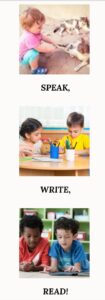 e you’ll learn how to develop literacy skills, based on each child’s own Key Words. You’ll also see how to organize Action Based Projects that allow the child to use literacy skills to gain information about the world around them. And you’ll discover how to create a hands-on, individualized math program based on Bead Trading — a table game children of various ages can play together.
e you’ll learn how to develop literacy skills, based on each child’s own Key Words. You’ll also see how to organize Action Based Projects that allow the child to use literacy skills to gain information about the world around them. And you’ll discover how to create a hands-on, individualized math program based on Bead Trading — a table game children of various ages can play together.
There’s no curriculum to buy. All you need are the strategies described here, a supply of the common writing and drawing materials — plus a child willing to tell you what’s on their mind. You may also want to add a set of phonics materials, and if so, recommendations for an inexpensive set are given on the phonics page.
But it is not necessary to buy anything special.
Key Words and The Steps
Key Words are “captions for the child’s mind pictures.” They represent something the child loves, fears, wants, or is simply fascinated with. Because a child is very interested in seeing their own “talk” written down, Key Words become a strong magnet for skill development.
So Key Words are a fun, easy, and powerful way to move a young child from speech — into print.
The adult models, the child absorbs and develops literacy skills — through the power of Key Words: Sit with a child and talk about something they care about — until they come up with a word or two that represents  what they’ve been saying. Maybe it’s “ice
what they’ve been saying. Maybe it’s “ice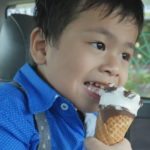
![]() cream.” So you write that on a sturdy card for them. You say the names and/or the sounds of the letters as you write. Once you’ve finished writing the word, they trace over the letters with the index finger of their writing hand. You hold it up so they can see the entire word again, as you “read” it together.
cream.” So you write that on a sturdy card for them. You say the names and/or the sounds of the letters as you write. Once you’ve finished writing the word, they trace over the letters with the index finger of their writing hand. You hold it up so they can see the entire word again, as you “read” it together.
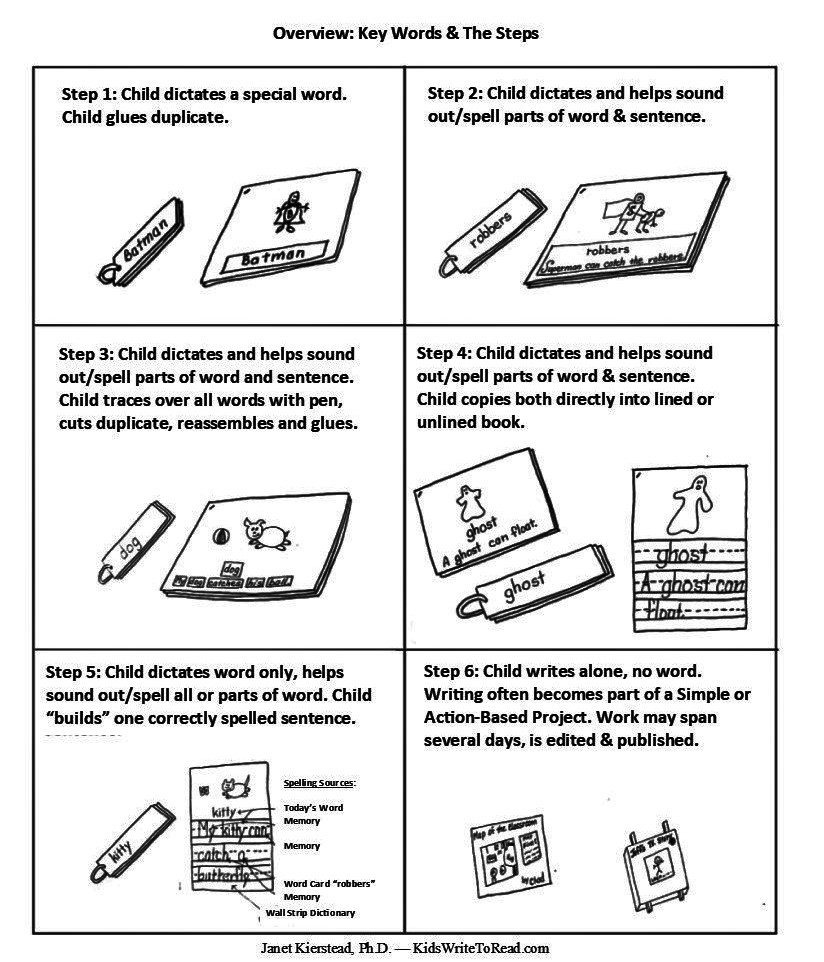 As a follow-up activity the do with their Key Word, you give them a copy of their word. They glue it onto a page in their writing book and draw a picture about it. They do the same thing the next session — asking for a different Key Word.
As a follow-up activity the do with their Key Word, you give them a copy of their word. They glue it onto a page in their writing book and draw a picture about it. They do the same thing the next session — asking for a different Key Word.
Once they’re used to that simple routine, you have them also dictate a complete sentence about their new Key Word. Doing this day after day, they begin to absorb the letters you write for the different sounds needed as you spell and how you use punctuation. And they begin to recognize many “sight” words.
Growth powered by Key Words is structured by The Steps. As the child grows — at their own pace — you make their follow-up activity more complex. There are six follow-up activities that guide this long-term process — referred to as The Steps, shown here.
Working through The Steps in this way, day after day, the child begins to absorb phonetic connections, practice how to form letters with greater ease, and absorb and copy basic literacy skills — punctuation, capitalization, “sounding out words,” etc.
So you are modeling and they are absorbing and learning to master all the skills that go into writing/reading. So this Key Words and Steps process mirrors how we help a child learn to speak. It’s just a little more preplanned and intentionally guided than with speech.
Readings To Develop the Basics
To help you begin exploring this approach, I’ve listed a few brief readings, pared down from those in the larger website. It would also help you stay up to date with new information by joining the Facebook Group devoted to this approach (link is below).
Some like to start by reading #3. Snapshot Of A Natural Approach To Learning to get a more detailed picture of what’s included in this approach. And there are other detailed “how to” readings.
But if you decide to use Key Words and The Steps, I highly recommend you pause and take some quiet time to read #1. A What About Curriculum? and #2. Approach To Learning…on the list below. For you may need to make some decisions about how to adapt activities in ways that will work best for a particular child. And that reading will give you the foundation for deciding the best way to do that.
Following are links to readings I’ve streamlined from the more detailed discussion of topics in the larger website:
1. What about Curriculum? When and how to focus on reading, writing, and higher level thinking skills vs developing predetermined content. Provides guidelines for developing literacy skills — based on a child’s heartfelt interests and the words they speak to describe them.
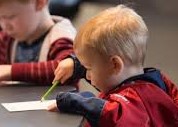
2. A Natural Approach To Learning: Why and How It Works. Rationale behind a natural approach — especially why it works so well for all children. Also shows what the child is accomplishing with Key Words.
3. Snapshot Of A Natural Approach A brief overview of the 4 basic components in this approach: Key Words, Phonics, The Steps, and Projects.
4.Working Through The Steps With Key Words: How to work with Key Words and the follow-up activities known as The Steps. Includes how to decide when a child is ready to move forward. (Basic directions apply to both preschool and primary.)
5.Key Words With Preschoolers: How you might modify procedures in #4 to guide a younger child.
6.Phonics With Key Words: Strategies for incorporating a strong phonics component and other literacy skills into Key Words.
7. Projects — For All Ages: How to develop the process skills of investigation, analysis and reporting, through projects designed to capture the child’s interest and imagination. These range from simple activities for very young children — to more complex projects for older students.
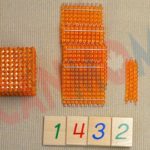 7. Individualized Math: Bead Trading: This is the math companion piece to Key Words and The Steps. Shows how to develop a math program based on a board game children at all levels can play together. Spans learning to count, all the way through multiplication and column addition — all by playing a game children love.
7. Individualized Math: Bead Trading: This is the math companion piece to Key Words and The Steps. Shows how to develop a math program based on a board game children at all levels can play together. Spans learning to count, all the way through multiplication and column addition — all by playing a game children love.
Additional Brief Topics
 Reading Is Child’s Play: A printable, PDF version of a simple activity using Key Words while grocery shopping. Can also be used with other types of outings.
Reading Is Child’s Play: A printable, PDF version of a simple activity using Key Words while grocery shopping. Can also be used with other types of outings.
Letter Formation & Holding Pencils: Charts to guide letter formation. Plus a simple strategy for helping your 3 1/2 or 4 year old child to the correct way to hold a pencil. (Before that — when their motor skills are less mature, we encourage the child to hold the pencil/crayon in any way that 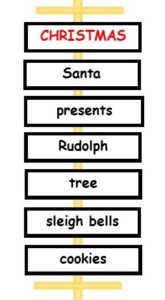 feels comfortable to them.)
feels comfortable to them.)
Brainstorm for Special Topics: A strategy for developing ideas and vocabulary for writing about holidays, units of study, and other special topics.
Montessori 3 Part Lesson: Outline and a video showing the 3 Parts (also referred to as 3 “Periods”).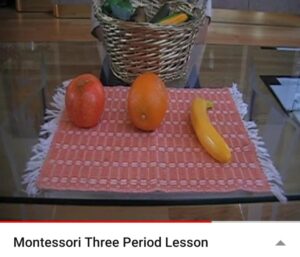
Join our Facebook Group and help us with this effort!
I’m working to help children avoid the struggle and failure too many of them experience as they attempt to learn to read and write. And I could use your ideas and help!
If you haven’t already done so, please join our Facebook Group, Helping All Kids Write To Read. You can reach me with comments/questions and pictures of what your children are doing with these ideas — all by posting there. Sharing examples can help others move in this direction. (Posts come to me first, and they will remain private, unless you intend for them to be published.) Or, you can reach me privately through messenger or the email address below.
You’ll also find a post there offering FREE BOOKS FOR CHILDREN TO READ ONLINE.
Beyond that — this is an all-volunteer project, so there are no funds for a copy editor to look for mistakes in the website. So I would much appreciate your telling me of any glitches or typos — also what expansion/clarification might help. Again you can
Many thanks in advance for any help you can give this effort!
Janet Kierstead, Ph.D.
next —> What About Curriculum?
< — back A Natural approach To Learning
Questions/Comments: KidsWriteToRead@yahoo.com